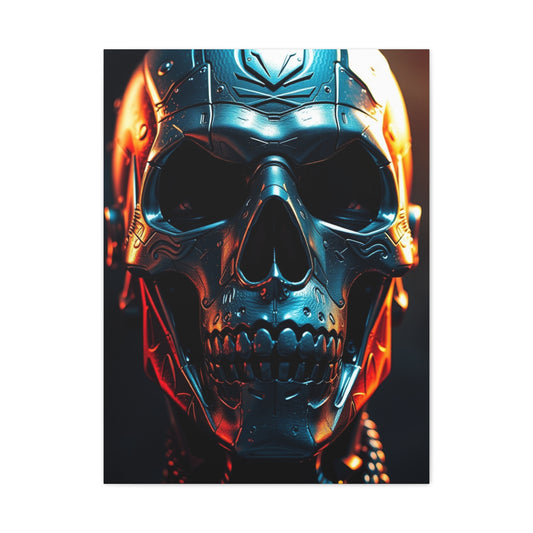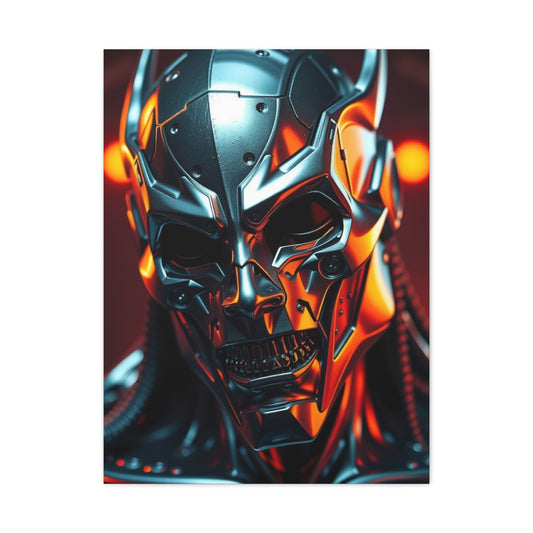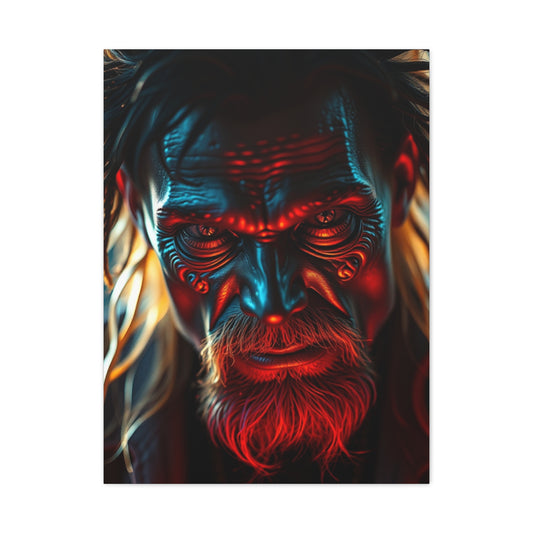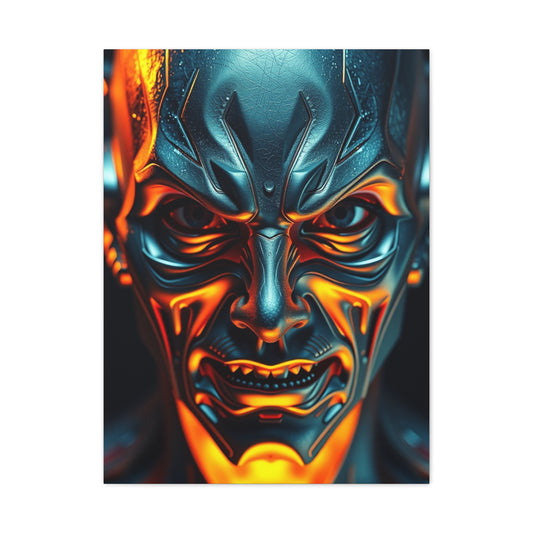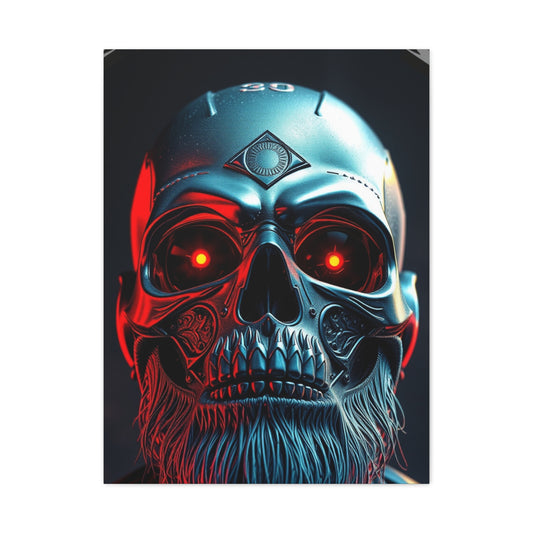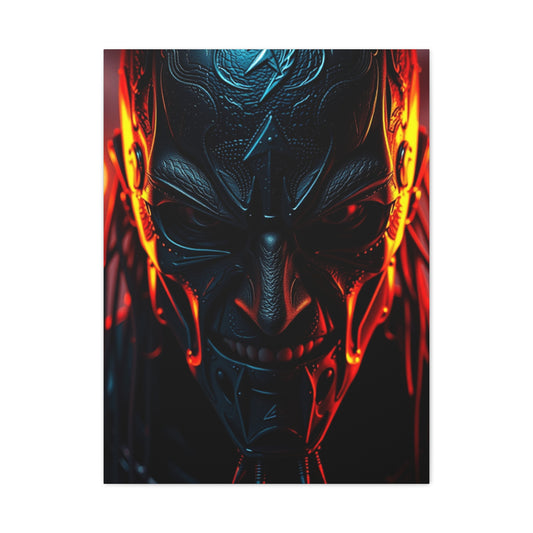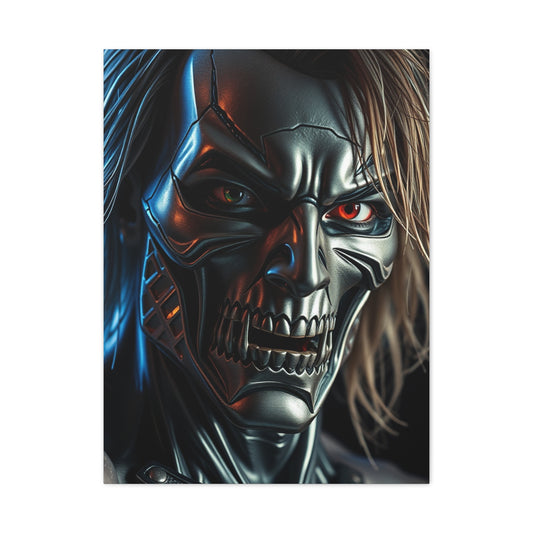Visual Art Inspired by Metallica: Wall Art Concepts and Styles
The marriage between heavy metal music and ancient Norse mythology creates a powerful visual narrative that resonates deeply with fans of both cultures. When combining Metallica's aggressive musical style with the rich storytelling traditions of Viking lore, artists discover endless possibilities for creative expression. This fusion concept draws inspiration from the band's own exploration of mythological themes, particularly evident in their earlier works and stage performances.
Creating Norse mythology fusion pieces requires understanding both the symbolic language of ancient Scandinavian culture and the visual identity that Metallica has cultivated over decades. The imagery often incorporates runic alphabets, which can be used to spell out song lyrics or band member names in an authentic ancient script. These runes carry mystical significance and add layers of meaning to any visual composition. The aesthetic naturally lends itself to darker color palettes, with deep blues representing the Nordic skies, silver and gray tones reflecting the metallic elements, and touches of gold highlighting important symbolic elements.
The iconography of Norse mythology provides rich material for artistic interpretation. Mjolnir, Thor's hammer, becomes a natural symbol to incorporate alongside Metallica's lightning bolt imagery. The World Tree Yggdrasil can be reimagined with guitar necks as branches, while the roots intertwine with bass lines and drumsticks. Ravens, particularly Huginn and Muninn (Odin's messengers), can be depicted carrying guitar picks or sheet music, bridging the gap between ancient wisdom and modern musical expression.
Warriors and battle scenes translate beautifully into concert imagery, with Viking longships transformed into stage designs and ancient armor reflecting the leather and metal aesthetic of heavy metal culture. The concept of Valhalla, the hall of the slain, can be reimagined as the ultimate concert venue where legendary performances echo for eternity. This creates compelling visual metaphors that speak to both the epic nature of Metallica's music and the grandeur of Norse mythological tales.
Artistic techniques for this fusion style often emphasize texture and depth. Weathered surfaces, as if aged by centuries of Nordic winters, provide authentic backgrounds for contemporary elements. Metal leaf application can create the illusion of ancient armor or sacred artifacts, while distressed finishes suggest the passage of time and the enduring nature of both the music and the mythology.
The color symbolism in Norse mythology offers additional layers for artistic interpretation. The nine worlds of Norse cosmology each have distinct characteristics that can be translated into unique visual themes. Asgard's golden halls might inspire pieces with warm, triumphant tones celebrating the band's greatest achievements, while Helheim's shadowy realm could influence darker compositions exploring themes of loss and introspection found in ballads and deeper cuts.
Contemporary artists working in this style often incorporate mixed media approaches, combining traditional painting or drawing techniques with digital manipulation to achieve otherworldly effects. The goal is to create pieces that feel both ancient and modern, honoring the source material while clearly connecting to Metallica's musical legacy. These works often serve as conversation starters, appealing to fans of mythology, metal music, and visual art simultaneously.
The storytelling aspect of Norse mythology aligns perfectly with Metallica's narrative songwriting style. Epic tales of gods and mortals, battles between good and evil, and the cyclical nature of creation and destruction mirror themes found throughout the band's discography. This thematic resonance makes the fusion feel natural rather than forced, creating authentic artistic statements rather than superficial mashups.
Neon-Style Metallica Tour Cities Map
The concept of visualizing Metallica's extensive touring history through neon-style mapping creates a vibrant celebration of the band's global reach and cultural impact. This artistic approach transforms geographical data into glowing tributes that capture the energy and electricity of live performances while documenting the band's journey across continents and decades.
Neon aesthetics bring an urban, contemporary feel that contrasts beautifully with traditional touring memorabilia. The bright, saturated colors associated with neon lighting—electric blues, hot pinks, vibrant greens, and classic orange—create visual excitement that mirrors the energy of live metal performances. These bold color choices ensure that each tour location stands out distinctly while contributing to an overall harmonious composition.
The mapping aspect requires careful consideration of geographical accuracy combined with artistic interpretation. Major tour cities can be highlighted with larger, more elaborate neon elements, while smaller venues might be represented by subtle glowing dots that still contribute to the overall pattern. The touring routes themselves become part of the artistic element, with neon lines connecting cities in chronological order, creating flowing patterns that tell the story of the band's movement across the globe.
Different tour eras can be distinguished through color coding, with each major album cycle or touring period represented by a specific neon hue. This creates a visual timeline that allows viewers to trace the band's evolution while exploring their geographical impact. The '80s tours might glow in classic neon pink, while the '90s could be represented in electric blue, and more recent tours in contemporary LED white or green tones.
The technical execution of neon-style art requires understanding both traditional neon sign construction and modern digital recreation methods. Hand-drawn designs often begin with bold, simple lines that capture the essence of neon tube bending. The characteristic glow effect, where light appears to radiate beyond the actual tube, creates depth and visual impact. Digital artists can achieve similar effects through careful use of blur, outer glow, and color mixing techniques.
Interactive elements can enhance the tour map concept, with QR codes or augmented reality markers that link to specific concert footage, setlists, or fan memories from particular shows. This bridges the gap between static visual art and dynamic digital media, creating multi-layered experiences that engage viewers on multiple levels.
The urban aesthetic of neon signage connects naturally with the metropolitan venues where many major Metallica concerts take place. Stadium shows, arena performances, and festival appearances all share the energy and scale that neon lighting represents. This thematic consistency strengthens the artistic concept while creating immediate visual recognition for viewers familiar with both neon aesthetics and concert experiences.
Scale considerations play an important role in neon-style mapping projects. Large-format prints allow for detailed representation of numerous tour stops while maintaining readability and visual impact. The glow effects that define neon aesthetics often require sufficient size to achieve their full visual potential, making oversized presentations particularly effective for this artistic approach.
The historical documentation aspect of tour mapping creates educational value alongside aesthetic appeal. Viewers can discover lesser-known venues, trace the band's growth from small clubs to massive stadiums, and understand the geographical patterns that define major touring circuits. This informational layer adds depth to the artistic experience while serving as a resource for fans and music historians.
Customization options allow for personal connections to the broader touring history. Individual fans might highlight shows they attended, creating personalized versions of the comprehensive map. Local scenes can be explored in greater detail, with city-specific versions that showcase multiple venues within a single metropolitan area or region.
Metallica Setlist Handwritten Wall Print
The intimate nature of handwritten setlists transforms routine concert preparation into personal artistic statements that capture the spontaneous and human elements of live performance. These behind-the-scenes glimpses into the planning and execution of Metallica concerts offer fans unprecedented access to the decision-making process that shapes their live music experiences.
Handwritten setlists possess an authenticity that digital alternatives cannot replicate. The physical act of writing creates unique characteristics—slight variations in letter formation, pressure differences that affect line thickness, and the natural imperfections that make each document distinctly human. These qualities translate beautifully into wall art that feels personal and connected to the actual performance preparation process.
The visual appeal of handwritten text lies in its organic nature and individual character. Each band member's handwriting style tells a story about their personality and approach to music. Some might write with bold, confident strokes that reflect their stage presence, while others might use more precise, methodical lettering that suggests careful planning and attention to detail. These personality indicators add layers of meaning to what might otherwise be simple song lists.
Historical setlists document the evolution of live performances over time, showing how song selection, arrangement order, and special additions change from tour to tour. Early career setlists might feature different song combinations, shorter overall lengths, or include covers that later disappeared from regular rotation. This historical documentation creates valuable records that chronicle not just what was played, but how the band's live presentation evolved.
The practical aspects of setlist creation reveal interesting insights into concert planning. Notes about special guests, equipment changes, or timing considerations often appear in margins or between song titles. These annotations provide glimpses into the complex logistics that make large-scale concerts possible, adding educational value to the aesthetic appeal of the handwritten documents.
Artistic interpretation of handwritten setlists can take numerous forms. Direct reproduction maintains authenticity while creating museum-quality displays suitable for framing and wall mounting. Enhanced versions might incorporate concert photography, ticket stubs, or venue information to create comprehensive commemorative pieces that tell complete stories about specific performances.
The emotional connection between fans and setlists runs deep, as these documents represent the exact sequence of songs that created specific concert memories. For attendees, seeing a handwritten setlist from a show they attended triggers powerful recollections of the live experience, the crowd energy, and personal moments associated with particular songs or portions of the performance.
Typography enthusiasts find particular appeal in handwritten setlist aesthetics, as they represent functional communication that prioritizes clarity and speed over decorative elements. This utilitarian approach to lettering creates honest, unpretentious visual statements that contrast sharply with polished promotional materials or commercial typography.
The collectible nature of authentic setlists has created a robust market for reproduction prints that make these exclusive items accessible to broader audiences. High-quality reproductions allow fans to own pieces of concert history without the expense or rarity concerns associated with original documents. This democratization of access helps preserve and share these cultural artifacts.
Creative interpretations might incorporate multiple setlists from different eras or tours, creating comparative displays that highlight changes in repertoire, song placement, or performance structure. These comparative presentations offer analytical insights while maintaining the personal, handwritten aesthetic that makes individual setlists so appealing.
Display considerations for handwritten setlist wall prints include appropriate framing that protects while showcasing the documents, lighting that enhances readability without causing damage, and positioning that allows for comfortable viewing and appreciation of the handwritten details that make each piece unique.
"Fade to Black" Emotional Visual Art
The deeply personal and introspective nature of "Fade to Black" provides rich source material for visual artists exploring themes of isolation, depression, and emotional struggle through creative expression. This song's raw honesty and vulnerable lyrics create opportunities for powerful visual interpretations that resonate with listeners who have found meaning and connection through its message.
Visual representations of emotional darkness require careful consideration of color, composition, and symbolic elements that convey psychological states without exploiting or trivializing serious mental health themes. The artistic challenge lies in creating pieces that honor the song's emotional depth while offering hope and connection to viewers who might be experiencing similar feelings.
Color palettes for "Fade to Black" inspired art typically emphasize deep, muted tones that reflect the emotional landscape described in the lyrics. Charcoal grays, midnight blues, and rich purples create foundations that suggest depression and isolation, while subtle highlights in silver or pale gold can represent moments of clarity or hope that emerge even in darkness.
Textural elements play crucial roles in conveying emotional states visually. Rough, distressed surfaces might represent the turmoil and confusion described in the song, while smoother areas could symbolize moments of peace or resolution. Mixed media approaches allow artists to incorporate various materials and techniques that create tactile qualities matching the emotional complexity of the source material.
Symbolic imagery associated with "Fade to Black" often includes representations of light and shadow, open spaces that suggest isolation, and transitional elements that reflect the psychological journey described in the lyrics. Windows, doorways, and pathways become metaphors for choice and possibility, while empty rooms or landscapes might represent feelings of abandonment or disconnection.
The artistic interpretation of mental health themes requires sensitivity and awareness of the potential impact on viewers. Responsible approaches focus on creating works that acknowledge pain while offering hope, avoiding graphic or triggering imagery that might harm vulnerable individuals. The goal is to create spaces for reflection and connection rather than sensationalizing psychological distress.
Abstract approaches to "Fade to Black" visual art allow for personal interpretation while maintaining emotional authenticity. Flowing forms, gradient transitions, and atmospheric effects can convey the internal emotional landscape without requiring literal representations of the themes. This abstraction creates space for viewers to project their own experiences and find personal meaning in the work.
The healing potential of art inspired by "Fade to Black" lies in its ability to make visible the invisible aspects of emotional struggle. By creating visual representations of internal experiences, artists help validate and normalize discussions about mental health while providing outlets for both creators and viewers to process difficult emotions.
Community engagement around "Fade to Black" inspired art often includes discussions about mental health resources, support systems, and the role of music in emotional healing. These conversations transform individual artistic expressions into opportunities for collective support and understanding, extending the therapeutic value beyond the immediate aesthetic experience.
Historical context for the song's creation and reception adds layers of meaning to visual interpretations. Understanding the circumstances that inspired the original lyrics, the band's intention in sharing such personal content, and the song's impact on fan communities creates deeper connections between artistic interpretations and their source material.
The universality of the emotions explored in "Fade to Black" makes visual art inspired by the song accessible to diverse audiences, regardless of their familiarity with heavy metal music. The themes of struggle, hope, and human connection transcend musical genres and create opportunities for meaningful artistic dialogue across different communities and cultural backgrounds.
Vintage Cassette-Tape Metallica Tribute
The nostalgic appeal of cassette tape aesthetics captures a specific era in music consumption that holds special significance for Metallica fans who experienced the band's rise during the format's peak popularity. These vintage-inspired tributes celebrate both the tactile nature of physical media and the raw, unpolished sound quality that defined early heavy metal recordings.
Cassette tape visual elements offer rich opportunities for artistic interpretation, from the mechanical precision of the tape mechanisms to the hand-drawn aesthetics of homemade mixtape covers. The format's inherent imperfections—tape hiss, slight speed variations, and the physical degradation that occurs over time—become artistic features rather than technical limitations.
The cultural significance of cassette tapes extends beyond mere music storage, representing a time when music sharing was personal and deliberate. Creating a mixtape required time, effort, and careful curation, making each tape a thoughtful gift or personal statement. This intentionality translates beautifully into visual art that celebrates the care and attention that went into music sharing in the pre-digital era.
Visual recreation of cassette elements requires attention to authentic details that made the format distinctive. The clear plastic cases, paper inserts with hand-written track listings, and the visible tape spools all contribute to the format's unique aesthetic identity. Artists working in this style often emphasize these mechanical elements, creating compositions that celebrate the engineering and design of the physical format.
Color schemes associated with vintage cassette aesthetics typically draw from the materials and branding common during the format's heyday. Warm browns and oranges reflect the aging of plastic components, while metallic silver and gold tones represent the tape mechanisms and recording heads. Labels often featured bold, simple typography that translated well to small-scale reproduction.
The concept of mixtape culture provides rich thematic material for Metallica tribute pieces. Imaginary mixtapes featuring career-spanning track selections, themed compilations focusing on specific eras or moods, or collaborative mixes representing different band members' influences all offer creative starting points for artistic exploration.
Technical aspects of cassette tape function can become artistic elements in their own right. The bi-directional nature of tape playback, where content flows in both directions depending on the selected side, creates interesting compositional possibilities. The linear progression of music from beginning to end, without the random access capabilities of digital formats, reflects different listening behaviors and relationships with recorded music.
The DIY aesthetic associated with cassette culture aligns perfectly with the underground origins of heavy metal music. Hand-drawn cover art, photocopied inserts, and improvised storage solutions all reflect the grassroots creativity that characterized early metal scenes. These elements translate naturally into contemporary artistic interpretations that maintain authentic connections to the format's cultural context.
Collecting culture around vintage cassettes has created appreciation for the format's unique characteristics and historical significance. Original recordings on cassette often possess different sonic qualities than their CD or digital counterparts, creating distinct listening experiences that cannot be replicated through other formats. This sonic uniqueness adds depth to visual tributes that reference the format's distinctive audio characteristics.
Contemporary artists working with cassette-inspired themes often incorporate mixed media approaches that blend traditional artistic techniques with found objects and vintage materials. Actual cassette components might be integrated into sculptures or collages, while painted or drawn elements recreate the visual appeal of the format for viewers who may not have direct experience with cassette culture.
Silhouettes of Iconic Metallica Performances
The power of silhouette imagery lies in its ability to distill complex visual scenes into essential, recognizable forms that capture the energy and drama of live performance without requiring detailed representation. Metallica's stage presence and iconic performance moments translate beautifully into silhouette art that emphasizes movement, gesture, and the dynamic relationship between performers and audience.
Silhouette creation requires careful observation of body language, instrument positioning, and stage dynamics that make performances memorable and visually distinctive. Each band member has characteristic stances, movements, and gestures that remain recognizable even when reduced to simple black shapes against contrasting backgrounds. These signature poses become the foundation for powerful artistic statements.
The dramatic lighting conditions typical of heavy metal concerts provide natural inspiration for silhouette aesthetics. Stage lighting often creates strong contrast between bright backgrounds and darker foreground elements, making performers appear as dramatic shapes against brilliant illumination. This natural silhouetting effect during live shows demonstrates how the format captures authentic performance characteristics.
Historical performance documentation through silhouette art creates lasting records of significant concerts, tour moments, and career milestones. Iconic performances at legendary venues, breakthrough appearances, or career-defining shows can be preserved and celebrated through artistic interpretation that emphasizes their cultural and historical importance.
The minimalist nature of silhouette art allows viewers to focus on essential elements of performance energy without distraction from detailed visual information. This reduction to core visual elements often enhances emotional impact by allowing audiences to project their own memories and experiences onto the simplified forms.
Compositional considerations for performance silhouettes include the relationship between individual performers, the use of negative space to suggest stage environments, and the integration of audience elements that place the performance in context. The interaction between band members, their positioning relative to instruments and equipment, and their connection to the crowd all contribute to effective silhouette compositions.
Different performance contexts offer varied opportunities for silhouette interpretation. Stadium shows with massive stages and dramatic lighting setups create different visual possibilities than intimate club performances or acoustic settings. Each environment contributes unique characteristics that influence the artistic approach and final aesthetic.
The iconic status of certain Metallica performances makes them particularly suitable for silhouette treatment. Legendary shows, breakthrough television appearances, and career-defining festival performances all possess visual recognition that translates effectively into simplified artistic representation. These moments carry cultural significance that adds meaning beyond the immediate aesthetic appeal.
Technical execution of performance silhouettes can employ various artistic mediums and techniques. Traditional approaches might use black paper cutouts or stencil methods, while contemporary digital techniques allow for precise control over edge quality, proportion, and composition refinement. Each technical approach offers distinct aesthetic qualities that influence the final artistic statement.
The emotional connection between silhouette art and memory relies on the viewer's ability to recognize and relate to the depicted performance moments. Fans who attended specific shows might find powerful personal connections to silhouettes that capture moments from their concert experiences, while general audiences can appreciate the universal energy and excitement that effective performance silhouettes convey.
Barbed Wire + Metallica Lyric Collage
The integration of barbed wire imagery with Metallica lyrics creates powerful visual metaphors that reflect themes of struggle, confinement, and resistance that appear throughout the band's extensive catalog. This combination of harsh, industrial elements with poetic text creates compelling artistic tensions that mirror the emotional complexity found in heavy metal music.
Barbed wire carries strong symbolic associations with boundaries, protection, and hostile environments that resonate with many Metallica songs exploring themes of alienation, societal criticism, and personal struggle. The physical characteristics of barbed wire—its sharp edges, twisted construction, and functional design—provide rich visual textures that complement the aggressive energy of metal music.
Lyrical selection for barbed wire collage works requires careful consideration of thematic connections and visual compatibility. Songs dealing with war, imprisonment, social criticism, or internal conflict provide natural pairings with barbed wire imagery, while the specific words chosen can create powerful juxtapositions between harsh visual elements and emotional or poetic text.
The artistic challenge lies in balancing the dominant visual presence of barbed wire with the readability and impact of the incorporated lyrics. Text integration might involve threading words between wire strands, using the wire patterns as guidelines for text placement, or creating layered compositions where lyrics emerge from or disappear into the wire structures.
Color considerations for barbed wire and lyric collages often emphasize metallic tones and weathered surfaces that suggest age, exposure, and industrial environments. Rust effects, galvanized metal finishes, and oxidation patterns add authenticity to the barbed wire elements while providing visual interest that doesn't compete with text readability.
Different approaches to lyric integration offer varied aesthetic outcomes. Hand-lettered text maintains personal connection and organic quality, while stenciled or printed text provides consistency and clarity. The choice between approaches depends on the desired level of formality and the specific emotional tone appropriate for the selected lyrics.
The historical and cultural associations of barbed wire add layers of meaning to artistic works incorporating this element. Originally developed for agricultural applications, barbed wire became associated with military conflicts, prison systems, and border controls, creating complex symbolic meanings that vary depending on cultural context and personal experience.
Contemporary relevance of barbed wire imagery speaks to ongoing concerns about boundaries, security, and freedom that remain significant in current political and social discourse. These connections allow barbed wire and lyric collages to function as commentary on contemporary issues while maintaining connections to the musical source material.
Three-dimensional approaches to barbed wire collage work might incorporate actual wire elements alongside text, creating sculptural pieces that engage viewers through tactile as well as visual means. These mixed-media approaches require careful safety considerations while offering enhanced sensory impact and authentic material connections.
The contrast between the harsh, industrial nature of barbed wire and the emotional, personal content of lyrics creates productive artistic tension that reflects the broader characteristics of heavy metal music. This genre often combines aggressive musical elements with deeply personal or socially conscious lyrical content, making the barbed wire and lyric combination thematically appropriate.
Metallica Stage Lighting Blueprint Art
The technical precision and creative complexity of concert lighting design creates fascinating source material for artistic interpretation that celebrates both the engineering excellence and aesthetic vision required for successful large-scale performances. Metallica's elaborate stage productions rely on sophisticated lighting systems that enhance musical moments while creating immersive visual experiences for audiences.
Blueprint aesthetics possess distinctive visual characteristics that translate beautifully into wall art celebrating technical achievement and creative planning. The combination of precise technical drawings with artistic interpretation creates pieces that appeal to both engineering enthusiasts and design appreciators while maintaining clear connections to live music experiences.
Stage lighting systems for major touring acts involve hundreds of individual fixtures, complex control systems, and carefully choreographed sequences that synchronize with musical arrangements. The technical documentation for these systems provides detailed visual information that can be transformed into compelling artistic statements celebrating the collaboration between technical and creative professionals.
The artistic interpretation of technical drawings requires understanding both the functional aspects of lighting equipment and the aesthetic goals that guide lighting design decisions. Different types of fixtures serve specific purposes—spotlights for individual highlighting, wash lights for broad coverage, and special effects units for dramatic moments—and these functional distinctions create opportunities for varied artistic treatment.
Color coding systems used in professional lighting design provide natural organizational principles for artistic interpretation. Different circuit types, fixture categories, and control zones are typically distinguished through color coding that creates visual hierarchy and functional clarity. These existing color relationships can be enhanced and emphasized in artistic treatments.
The relationship between lighting plots and architectural venues adds another layer of complexity and interest to blueprint-inspired art. The physical constraints and opportunities provided by different venue types influence lighting design decisions, creating site-specific solutions that reflect both technical requirements and creative possibilities.
Historical evolution of concert lighting technology offers rich material for comparative artistic treatments. Early touring setups used relatively simple equipment compared to contemporary LED arrays, computerized control systems, and synchronized multimedia displays. This technological progression creates opportunities for artistic documentation and celebration of innovation.
The collaborative nature of lighting design involves input from band members, production managers, venue technicians, and creative directors, making the final lighting plots documents of collective creative decision-making. This collaborative aspect adds human interest to what might otherwise be purely technical documentation.
Interactive elements can enhance lighting blueprint art by incorporating QR codes or augmented reality features that link to video footage showing the actual lighting designs in action. This connection between static technical documentation and dynamic performance footage creates multi-layered experiences that bridge different media formats.
The precision required for successful lighting design reflects broader themes of professionalism, attention to detail, and technical excellence that support artistic achievement. These values resonate with audiences who appreciate craftsmanship and technical skill, creating connections between blueprint art and broader cultural values about quality and dedication.
Gothic Cathedral Metallica Theme Mashup
The architectural grandeur and spiritual significance of Gothic cathedral design creates fascinating juxtaposition opportunities when combined with heavy metal music aesthetics, resulting in artistic explorations that examine relationships between sacred and secular, ancient and contemporary, spiritual and rebellious themes.
Gothic architecture's emphasis on verticality, dramatic lighting effects, and ornate decorative details provides rich visual vocabulary that translates effectively into Metallica-themed artistic interpretation. The soaring arches, detailed stonework, and complex structural systems that characterize Gothic cathedrals offer multiple entry points for creative adaptation and reinterpretation.
The historical context of Gothic cathedral construction—massive community projects requiring decades of dedicated craftsmanship—creates interesting parallels with the sustained creative effort required for successful musical careers. Both represent long-term commitments to artistic vision that transcend individual contributions and create lasting cultural monuments.
Symbolic elements common to Gothic cathedral design offer opportunities for creative reinterpretation within metal music contexts. Flying buttresses might be reimagined as stage support structures, while rose windows could incorporate lyrical content or band imagery. These architectural features maintain their structural logic while taking on new symbolic meanings related to musical themes.
The acoustic properties of Gothic cathedrals, designed to enhance vocal music and create immersive sound experiences, provide natural connections to concerns about live music performance and sound design. The relationship between architectural space and musical experience creates thematic bridges between medieval sacred music and contemporary heavy metal performance.
Lighting considerations for Gothic cathedral mashup art draw inspiration from both the natural light filtering through stained glass windows and the dramatic artificial lighting used in concert settings. The interplay between colored light sources and architectural forms creates opportunities for artistic exploration that honors both source traditions while creating new synthetic expressions.
The craftsmanship traditions associated with Gothic cathedral construction—stone carving, metalworking, and glass artistry—share characteristics with the technical skills required for musical instrument construction and performance. These parallel craft traditions create conceptual connections that strengthen the thematic foundation for mashup artistic works.
Contemporary relevance of Gothic cathedral imagery speaks to ongoing human fascination with monumental architecture and spaces designed to inspire awe and reflection. These universal responses to architectural grandeur create common ground between religious and secular audiences, making Gothic cathedral mashups accessible to diverse viewers regardless of their spiritual or musical backgrounds.
The contrast between the sacred purposes of Gothic cathedrals and the rebellious reputation of heavy metal music creates productive artistic tension that can be explored through visual composition, symbolic juxtaposition, and thematic development. This tension reflects broader cultural conversations about tradition, innovation, and the evolution of artistic expression.
Mixed media approaches to Gothic cathedral Metallica mashups might incorporate architectural fragments, metallic elements, and lighting effects that create immersive installations rather than traditional two-dimensional artworks. These expanded approaches allow for environmental art experiences that surround viewers with synthesized architectural and musical references.
Fan Art Mashup with Comic Book Style
The dynamic visual language of comic book art provides excellent framework for creating fan art that captures the energy, drama, and larger-than-life qualities that define both superhero narratives and heavy metal music culture. The bold colors, dramatic poses, and action-oriented compositions that characterize comic book aesthetics translate naturally into Metallica-inspired artistic works.
Comic book storytelling conventions offer multiple approaches for structuring fan art narratives around band members, musical themes, or concert experiences. Sequential panels can document concert progression, while splash pages might capture iconic performance moments with the visual impact and dramatic emphasis typical of superhero comic climaxes.
The character design aspects of comic book art create opportunities for artistic interpretation of band members as heroic figures with distinctive visual identities, signature abilities, and compelling origin stories. Each musician's stage persona, musical contributions, and public image provide rich source material for character development that maintains recognizable connections to the actual individuals while embracing comic book exaggeration and stylization.
Color palettes in comic book art traditionally emphasize bold, saturated hues that create visual excitement and emotional impact. These vibrant color approaches complement the energetic nature of heavy metal music while providing clear contrast and readability essential for effective comic book communication. The dramatic lighting effects common in comic book art also parallel the stage lighting that defines live metal performances.
Action sequences in comic book art rely on dynamic poses, motion lines, and impact effects that convey movement and energy without actual animation. These visual techniques translate perfectly into representations of musical performance, where the physicality of playing instruments and the energy of live presentation create natural subjects for action-oriented artistic treatment.
The mythological and fantasy elements common in comic book narratives align well with themes found throughout Metallica's musical catalog. Songs dealing with war, justice, personal struggle, and epic conflicts provide natural storylines for comic book adaptation while maintaining thematic consistency with both source traditions.
Typography plays crucial roles in comic book art, with distinctive lettering styles, sound effects, and speech balloon designs that enhance narrative communication. Metallica-inspired comic book fan art can incorporate song lyrics, band quotes, or original dialogue using comic book lettering conventions that maintain stylistic consistency while adding textual elements.
The collector culture surrounding both comic books and music memorabilia creates natural audience overlap for fan art that combines these interests. Limited edition prints, variant covers, and exclusive releases all represent familiar concepts to fans of both mediums, suggesting distribution and presentation strategies that honor both traditions.
Digital art tools and techniques common in contemporary comic book production allow fan artists to achieve professional-quality results while maintaining accessibility for creators with varying skill levels. The availability of digital brushes, color palettes, and effect filters designed specifically for comic book art creation democratizes the production process while maintaining authentic aesthetic qualities.
The collaborative nature of comic book creation—involving writers, pencilers, inkers, colorists, and letterers—mirrors the collaborative aspects of band music creation, creating thematic connections between the creative processes involved in both art forms. This parallel structure strengthens the conceptual foundation for mashup works that celebrate both traditions.
Typography Explosion of Song Titles
The visual power of typography transforms written language into graphic art that can convey meaning through letterform design, spatial arrangement, and stylistic choices that go beyond simple textual communication. When applied to Metallica song titles, typographic exploration creates opportunities for artistic interpretation that reflects both the content and emotional character of the music.
Explosive typography suggests dynamic, energetic presentation that matches the intensity and power of heavy metal music. Letter forms might appear to burst from central points, scatter across compositional space, or fragment in ways that suggest the aggressive energy and emotional release characteristic of the musical source material.
Different song titles provide varied opportunities for typographic interpretation based on their linguistic content, emotional associations, and musical characteristics. Aggressive tracks might inspire angular, distorted letterforms, while ballads could suggest more flowing, organic approaches to type design. This variety allows for diverse artistic exploration within a cohesive thematic framework.
The historical evolution of metal music typography creates rich source material for artistic reference and inspiration. Early album covers, concert posters, and promotional materials established visual vocabularies that continue to influence contemporary design while offering authentic connections to the music's cultural development.
Scale relationships in typography explosion works require careful consideration to maintain readability while achieving dramatic visual impact. Hierarchical arrangements that emphasize certain titles over others can create focal points and guide viewer attention through complex compositions without losing individual textual elements.
Color relationships in typographic explosion pieces often emphasize contrast and visual separation between overlapping or adjacent elements. Metallic finishes, gradient effects, and lighting simulations can enhance the dimensional quality of letterforms while maintaining thematic connections to metal music aesthetics.
Three-dimensional typography approaches might incorporate layered compositions, shadow effects, or actual dimensional letterforms that create sculptural qualities. These expanded approaches allow typography to function as environmental art that surrounds viewers with textual elements arranged in spatial compositions.
The emotional content of different song titles creates opportunities for expressive typography that conveys meaning through visual style as well as textual content. Melancholy titles might inspire subdued color palettes and softer letterforms, while anthemic songs could suggest bold, celebratory typographic treatment.
Interactive typography installations might incorporate motion sensors, lighting effects, or sound triggers that activate different textual elements based on viewer presence or input. These technological enhancements create dynamic experiences that bridge static visual art with the temporal nature of musical performance.
Educational aspects of typography explosion art can introduce viewers to the extensive catalog of Metallica compositions while celebrating the craft and creativity involved in visual communication design. This dual function creates works that serve both aesthetic and informational purposes.
Metallica x Apocalyptic Landscape Art
The thematic connections between heavy metal music and apocalyptic imagery create natural foundations for artistic exploration that examines destruction, renewal, and human resilience in the face of overwhelming challenges. Metallica's extensive catalog includes numerous songs that engage with apocalyptic themes, providing rich source material for visual interpretation.
Apocalyptic landscape art draws inspiration from both natural disasters and human-caused destruction while maintaining focus on the visual and emotional impact of transformed environments. These landscapes often emphasize dramatic scale, powerful natural forces, and the contrast between destruction and survival that creates compelling visual narratives.
Color palettes for apocalyptic landscapes typically emphasize dramatic contrasts between dark, threatening elements and bright, intense highlights that suggest fire, explosion, or otherworldly illumination. These high-contrast approaches create visual excitement while conveying the extreme conditions that define apocalyptic scenarios.
The concept of transformation plays central roles in both apocalyptic narratives and artistic interpretation, as familiar landscapes become unrecognizable through catastrophic change. This transformation theme connects to musical themes about personal change, societal evolution, and the constant flux that characterizes human experience.
Environmental elements in apocalyptic landscape art might include natural disasters, industrial decay, war-torn terrain, or fantastical scenarios that combine multiple destructive forces. Each approach offers different opportunities for visual exploration while maintaining thematic connections to the overwhelming challenges that inspire both fear and fascination.
The human element in apocalyptic landscapes often emphasizes resilience, adaptation, and the persistent hope that survives even in desperate circumstances. These human themes create emotional connections that prevent apocalyptic art from becoming purely destructive or nihilistic, instead celebrating the endurance and creativity that define human response to crisis.
Symbolic elements in apocalyptic landscape compositions might include ruins of recognizable structures, surviving vegetation in hostile environments, or technological artifacts that suggest both past achievements and future possibilities. These symbols create layers of meaning that invite contemplation about civilization, progress, and renewal.
The scale relationships in apocalyptic landscape art often emphasize human vulnerability in the face of massive environmental forces while simultaneously celebrating human significance through survival and resistance. This tension between insignificance and importance creates emotional complexity that reflects the philosophical depth found in thoughtful apocalyptic narratives.
Contemporary relevance of apocalyptic imagery speaks to current concerns about environmental change, technological disruption, and social instability that make apocalyptic scenarios feel increasingly plausible. This relevance adds urgency and emotional weight to artistic explorations of apocalyptic themes.
Mixed media approaches to apocalyptic landscape art might incorporate found objects, weathered materials, and lighting effects that create immersive environments rather than traditional representational artworks. These expanded approaches allow viewers to experience apocalyptic atmospheres more directly while engaging with both visual and tactile elements.
Conclusion:
The artistic dialogue between Metallica’s powerful heavy metal sound and the timeless allure of Norse mythology has given rise to a dynamic and evocative body of wall art that resonates deeply with fans and art enthusiasts alike. This creative fusion is much more than a simple blend of music and ancient lore; it is a celebration of shared themes—battle, endurance, heroism, and mysticism—that define both Metallica’s legacy and Viking storytelling traditions.
Artists working in this genre expertly navigate the rich symbolism of Norse mythos, such as the iconic Mjolnir, Yggdrasil, and Odin’s ravens, integrating these potent emblems seamlessly with Metallica’s signature lightning bolts, aggressive motifs, and thematic depth. The use of runic alphabets to encode lyrics or band references adds a layer of esoteric meaning that invites viewers into a deeper interpretive experience. These artworks are often imbued with textured, weathered surfaces and metallic accents, reflecting both the harsh Nordic environment and the raw, metallic energy of Metallica’s sound.
The color schemes—deep blues evoking Nordic nights, silvers and grays reflecting steel and storm clouds, and golden highlights symbolizing divine or triumphant moments—further immerse audiences in a world where ancient myth and modern music collide. This palette creates a visually striking yet thematically coherent atmosphere that honors both source materials.
Complementing this mythological synthesis is the innovative neon-style tour city map concept, which transforms Metallica’s extensive global touring history into a glowing urban tapestry. By employing vibrant neon colors and light effects, artists capture the electrifying energy of Metallica’s live performances and the band’s vast cultural footprint. This map not only charts geographic milestones but also serves as a pulsating visual timeline of Metallica’s evolution through the decades. The neon aesthetic, tied to urban nightlife and concert culture, underscores the immediacy and spectacle of Metallica’s music in a way that is visually captivating and conceptually rich.
The fusion of traditional painting, mixed media, and digital techniques found in these artworks exemplifies how Metallica’s influence transcends the purely auditory realm, inspiring artists to innovate across multiple mediums. Whether depicting epic Viking battles, mystical symbols, or vibrant neon-lit cityscapes, these pieces invite viewers to engage with the band’s music on a new sensory level—one that is as much about sight and symbolism as it is about sound.
Ultimately, the marriage of Metallica’s heavy metal intensity with Norse mythology’s mythic grandeur reflects a broader cultural resonance: the universal human fascination with stories of power, struggle, and transcendence. This artistic fusion bridges time and genre, linking the past’s legendary narratives with the contemporary spirit of rock music and visual expression.
Metallica-inspired wall art is more than tribute; it is a thriving, evolving conversation between music, myth, and modern culture. Through these vivid, textured, and glowing artworks, the band’s legacy continues to echo—both in the hearts of fans and across the very walls of cities around the world, where ancient tales and modern anthems roar side by side.

